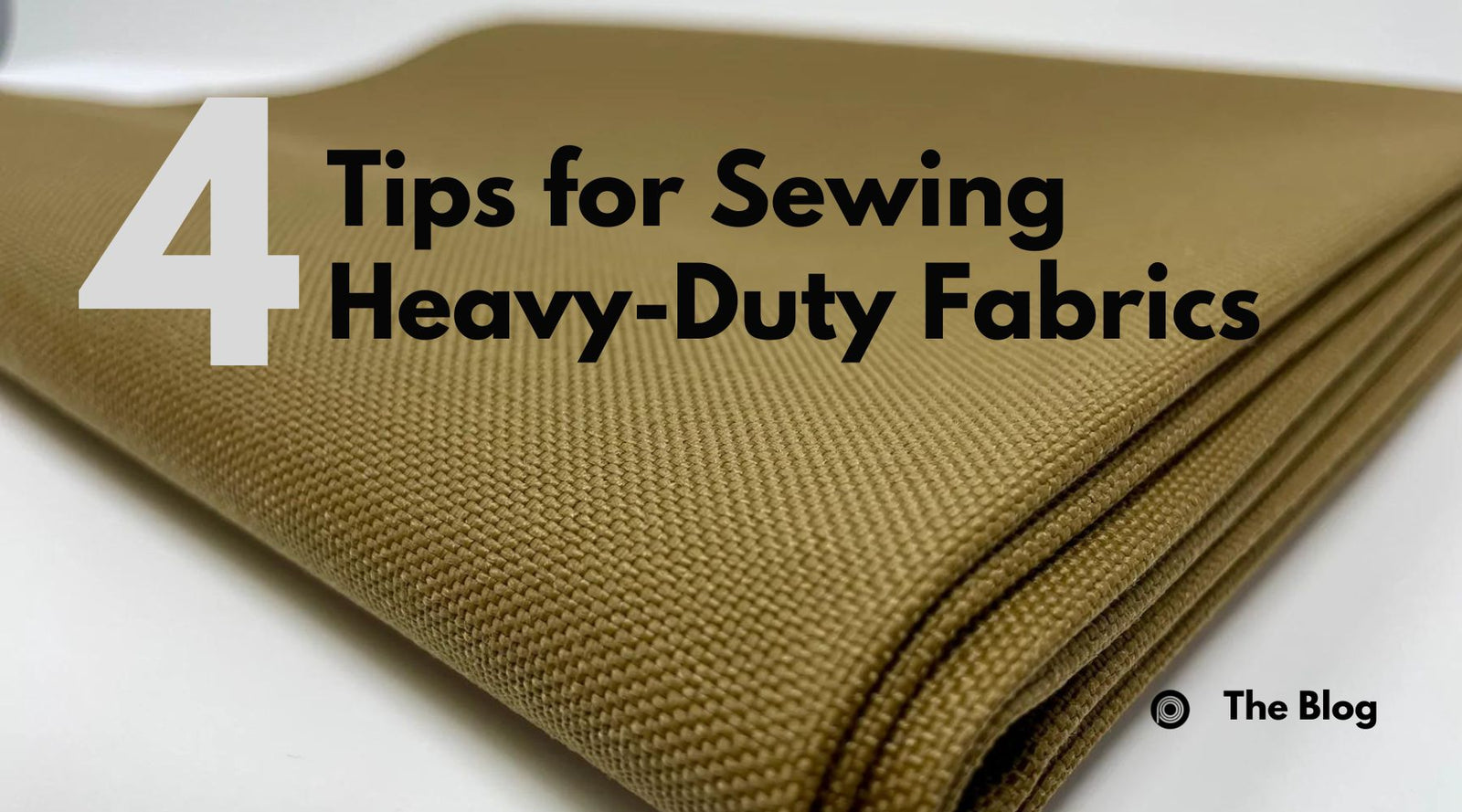Your Cart is Empty
Durability is one of the most consistent pillars of great gear. It’s obvious - everyone wants to have confidence that their project won't fall apart when they go to use it.
But before you can take your DIY bushcraft pack on an adventure, you have to make it. This is where many of us struggle.
Some of our toughest fabrics weigh upwards of 10 oz/yd² or more. For the average home sewing machine, this can be quite a challenge.
But don't sweat! In this article, we'll highlight four things you can do to help get the best results when sewing thick, heavy fabrics with your home machine.
Shop all pack fabrics HERE
It cannot be said enough: a good needle is VITAL to your project's success.
Let's begin with needle care. While you obviously have to change your needle when it breaks, it turns out that many professionals recommend you change your needle for each project. This will ensure that you have clean penetration with no compromises on the needle shaft.
Though seemingly minor, things like little burs, chips, and fabric coating bits can all negatively affect stitch quality and result in a poor outcome for your overall project. The moral of this story? Inspect and change your needle often.
When it comes to size, things are pretty straightforward. You'll most likely want to use something in the 14-16 range.
We recommend Schmetz Universal Machine Needle.
A thread like Gutermann MARA 70 will work well for the majority of fabrics less than ~8 oz/yd².
But as your fabric gets thicker, you many need to size up your thread to ensure it accommodates the strength of the fabric. In these situations, we recommend you use Gutermann MARA 50. This is also known in the textile industry as a TEX 60.
Heavier fabrics are often thicker as well. The thickness of the fabric comes into play when you’re adjusting your thread tension.
The thread tension will affect how much of a gap the machine will allow between the top thread and the bottom thread as they are weaving to create the stitch. Simply put, if the fabric is requiring a larger gap, you will need the thread to weave around a larger area.
Instead of reinventing the wheel, we found that the site Artisan Stitch has a wonderful graphic on thread tension, which you can find HERE. We highly recommend checking that out.
As much as you are able, you will want to minimize the weight and thickness of other materials you are putting through the machine.
For example, if you’re stitching a double layered hem of 1000D Cordura and sewing 1500 lb webbing all at the same time - chances are, your machine will not produce a good stitch.
Think about choosing thinner liner fabrics or lighter weight webbing to ensure that your stitches run well. Remember, you can check the weight specifications of our webbing and grosgrain on the product pages.
Every machine is different and allows different fabrics to pass through. When in doubt or if you're working with a new fabric, we recommend that you do some test stitches on scraps and see how your machine reacts.
We are always eager to hear what you all have to say!
What do you do to accommodate thicker fabrics? Do you have any special tricks?
Let us know in the comments below.
P.S. - If you are looking for some of the toughest materials around, chances are we have them. Six particular options come to mind if you need maximum abrasion resistance, as well as a material that is highly waterproof, are listed below:
Do you have any suggestions for needle size when sewing webbing to a thin material like DCF or silpoly? It seems like a larger needle would be desirable for penetrating the webbing, but this might end up damaging the thinner DCF fabric. A thinner needle would be more appropriate for DCF, but this might not penetrate the webbing very well especially if there is more than one layer of webbing.
Comments will be approved before showing up.






Yvonne Mueller
August 09, 2022
My problem with sewing heavy wt fabric with heavy thread, even with an appropriately large eyed needle, is that the thread tends to wear and break and I can never get the tension right. I wonder if I need to see if I can get a stitch plate with a larger opening. Has anyone else experienced this issue and what did you do about it? I usually just stick to all-purpose weight thread to make it work.